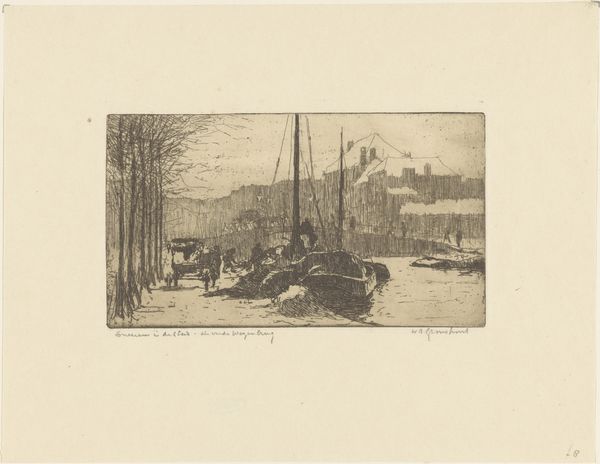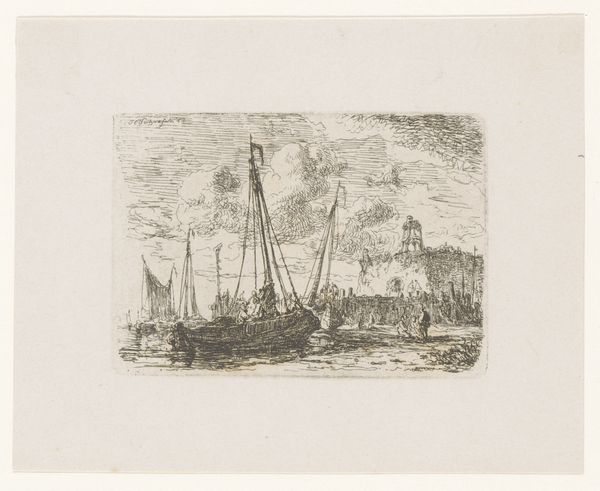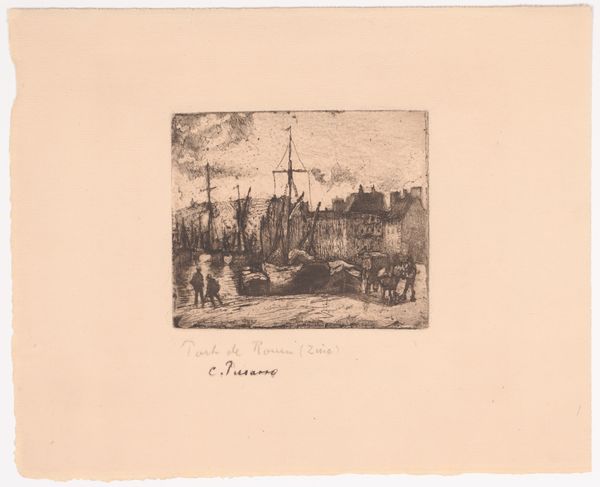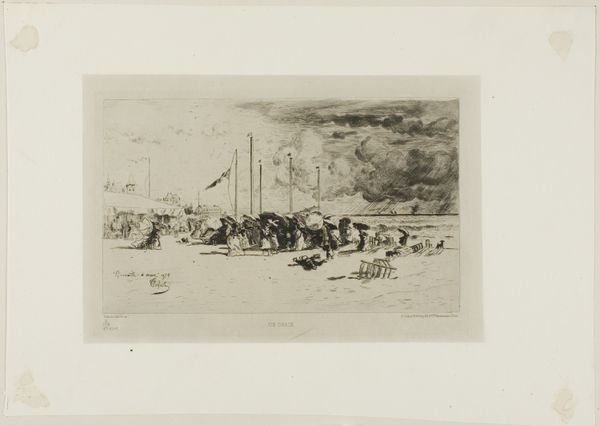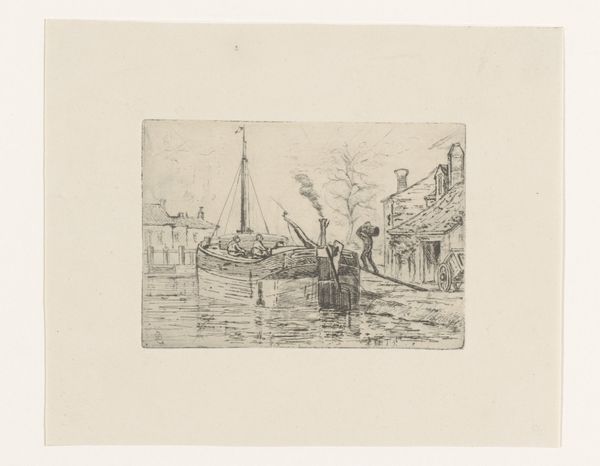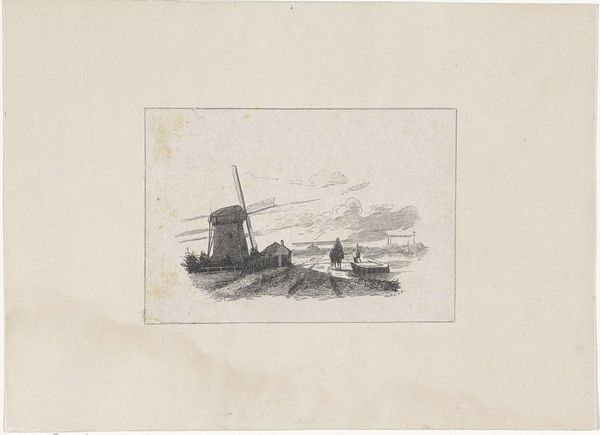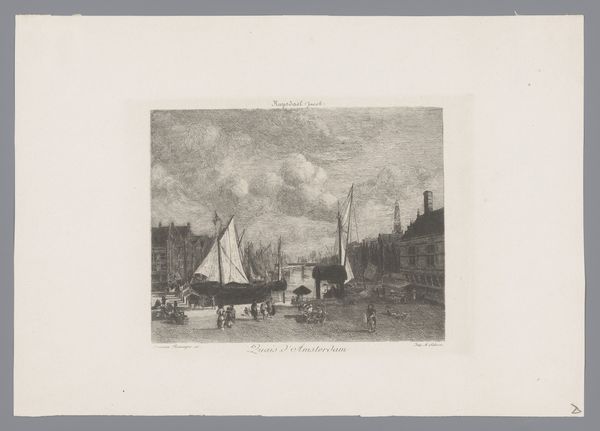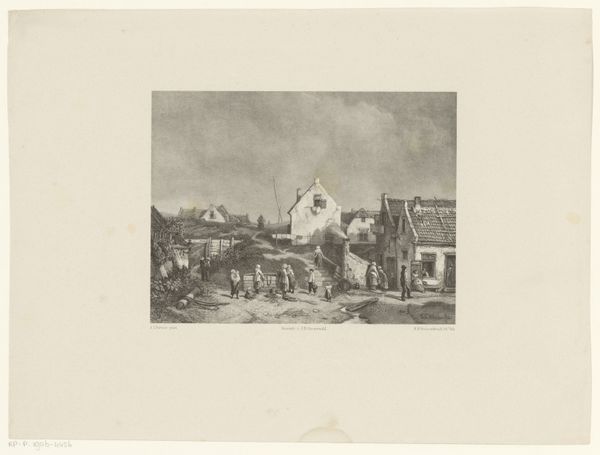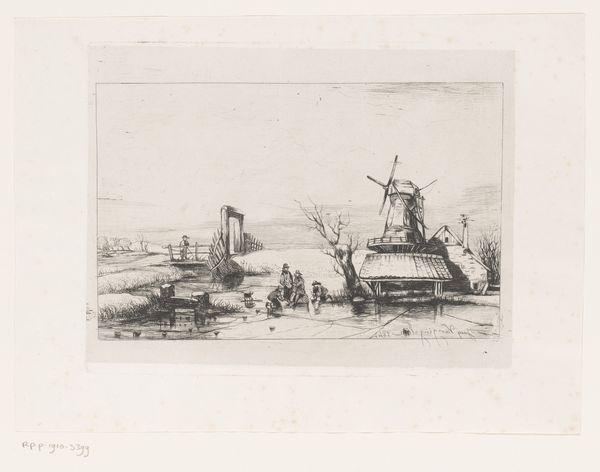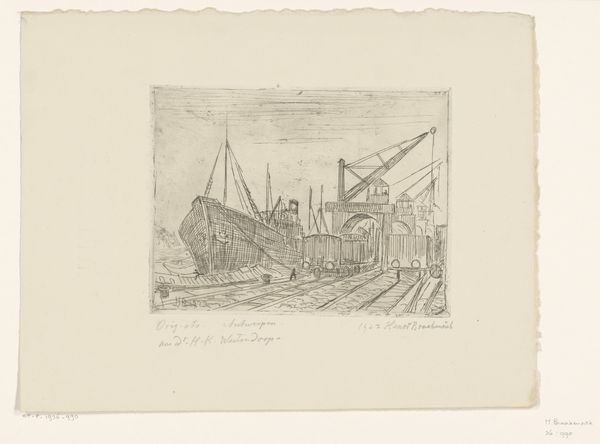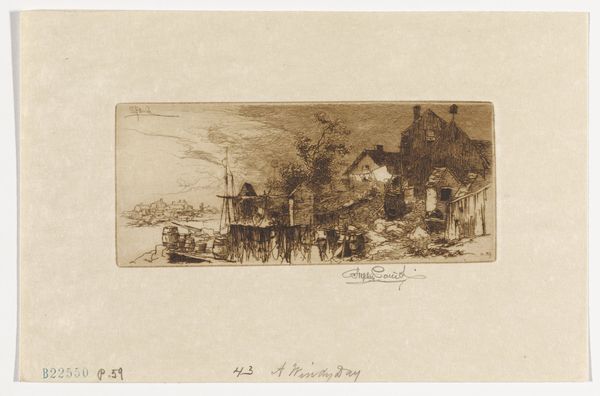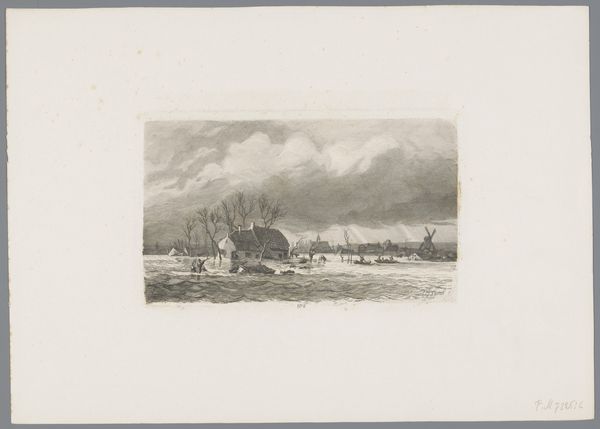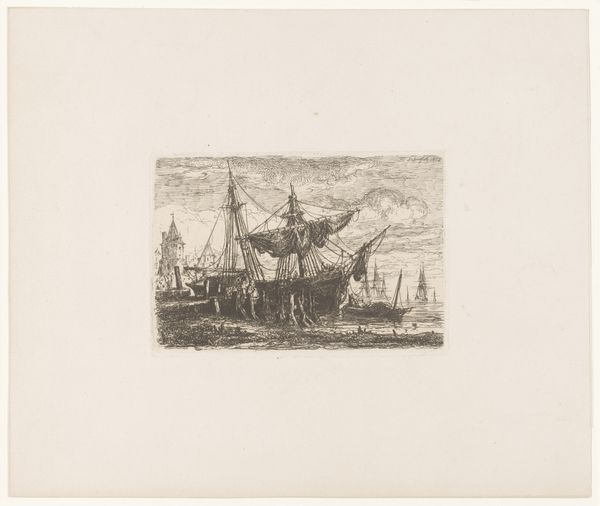
print, etching
# print
#
impressionism
#
etching
#
pencil sketch
#
landscape
#
cityscape
Dimensions: height 150 mm, width 171 mm, height 255 mm, width 325 mm
Copyright: Rijks Museum: Open Domain
Curator: This is Camille Pissarro’s etching, "Haven van Rouen," created sometime between 1883 and 1885. What are your immediate thoughts? Editor: My first impression? The grit! It’s all grime and industry—the air thick with the breath of steamboats and labor. It feels more like a study of human industry than a picturesque harbor scene, frankly. Curator: Indeed. Pissarro captures the working harbor. The softness of the etching lends itself well to rendering the atmospheric conditions – the steam and mist that envelop the scene, don't you think? There’s also a feeling of constant motion. Editor: Absolutely. Look at how the lines emphasize the machinery, the stacks, and what seems to be cargo being loaded. He is obviously preoccupied with showing the movement and transfer of goods as essential labor and the true subject of modernity. But what truly intrigues me is his chosen method; that Pissarro turns to printmaking suggests an appreciation for dissemination and the democratization of art that is far more radical than is afforded by conventional oil painting on canvas. Curator: Interesting point, as it wasn’t so typical for Impressionists to engage in printmaking at the time. This etching embodies the Impressionist style with its attention to the fleeting moment, but there is also his strong understanding of composition; and he is very good at the interplay between light and shadow. The industrial revolution’s visual manifestations are right here, but they feel somehow softer than in the paintings of some of his contemporaries. Editor: I would agree, but not for reasons inherent to Pissarro’s disposition. Rather, printmaking techniques are particularly suited to the depiction of fleeting atmospherics. More fundamentally, the relationship to reproduction complicates the romantic, auratic image of artistic geniuses favored at the time. By printing the “Haven,” the means by which people consume the image fundamentally challenges entrenched ideas about creative originality, while acknowledging new markets afforded by growing industry. Curator: So, the "grime," as you so aptly called it initially, extends beyond the surface of the subject matter? Editor: Precisely. Pissarro makes visible the mechanisms, both social and industrial, that propel the late 19th century forward, or perhaps drive it mad. Curator: I’ll definitely remember that, the next time I stroll along a bustling harbor! Editor: Indeed, may it spark a greater sensitivity for how art redefines value, even in our world today!
Comments
No comments
Be the first to comment and join the conversation on the ultimate creative platform.
